The XFX Radeon RX 5600 XT Thicc II Pro is a good $300 graphics card that suffers from AMD’s disjointed launch for the Radeon RX 5600 XT.
AMD pitched its $280 GPU as a rival to Nvidia’s identically priced GeForce GTX 1660 Ti. Then the company rushed out optional last-second BIOS updates that could greatly enhance memory and clock speeds (and thus performance), because Nvidia and its partners rolled out $300 GeForce RTX 2060 models rather than cutting costs on the GTX 1660 Ti. The eleventh-hour change indeed made the RX 5600 XT competitive with Nvidia’s RTX 2060, but AMD’s partners had already designed their lineup around the original specifications. That means you’ll find a wide variety of custom Radeon RX 5600 XT graphics cards available, some much faster than others, and with pricing that can sometimes seem befuddling.
Case in point: XFX’s Radeon RX 5600 XT Thicc II Pro remains worth considering but isn’t quite as appealing as it would have been originally, now that the dust around AMD’s last-second strategy shift has settled down.
XFX Radeon RX 5600 XT Thicc II Pro specs, features, and price
As a recap, the Radeon RX 5600 XT is essentially a lower-clocked, memory-reduced version of the Radeon RX 5700. It packs the same core GPU configuration, but just 6GB of GDDR6 memory compared to the RX 5700’s 8GB, and delivered over a smaller 192-bit bus. This gives it a lower overall memory bandwidth than its pricier sibling.
Here are AMD’s reference specs for the GPU, which remain the same despite the upgraded VBIOSes available:
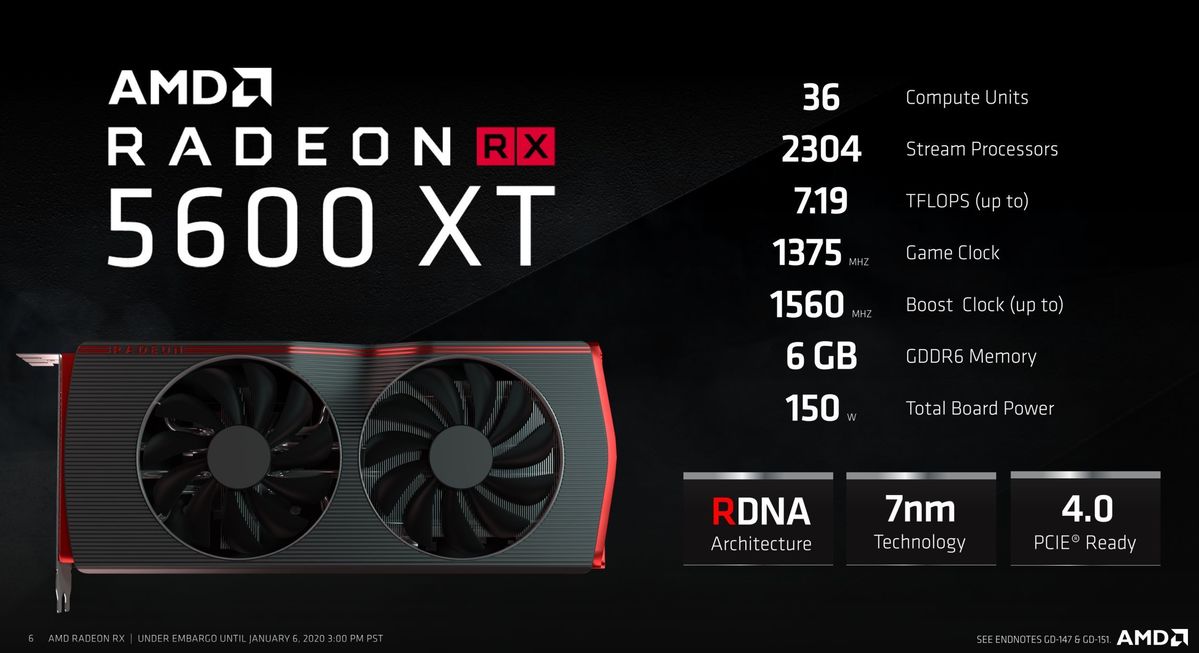 AMD
AMDAMD’s Radeon RX 5600 XT reference specs.
The Thicc II Pro was originally designed to run at those reference clock speeds, and if you buy one on store shelves today, near the Radeon RX 5600 XT’s launch window, it likely tops out at the reference 1,560MHz boost clock. XFX has released an updated “pro-tuned” BIOS for the Thicc II Pro that increases speeds.
AMD’s decision to loosen BIOS restrictions was so last-minute, the first wave of stock for most custom models shipped with the original, slower software. You can grab the new BIOS from the downloads section of XFX’s RX 5600 XT Thicc II Pro page if your model doesn’t come equipped with it. Asking end users to flash their firmware sucks, especially in a segment of the market that isn’t necessarily flooded with enthusiasts who might be more comfortable with the mildly risky process. This problem stems from AMD, not XFX.
Here are the specs for the Thicc II Pro with the upgraded VBIOS:
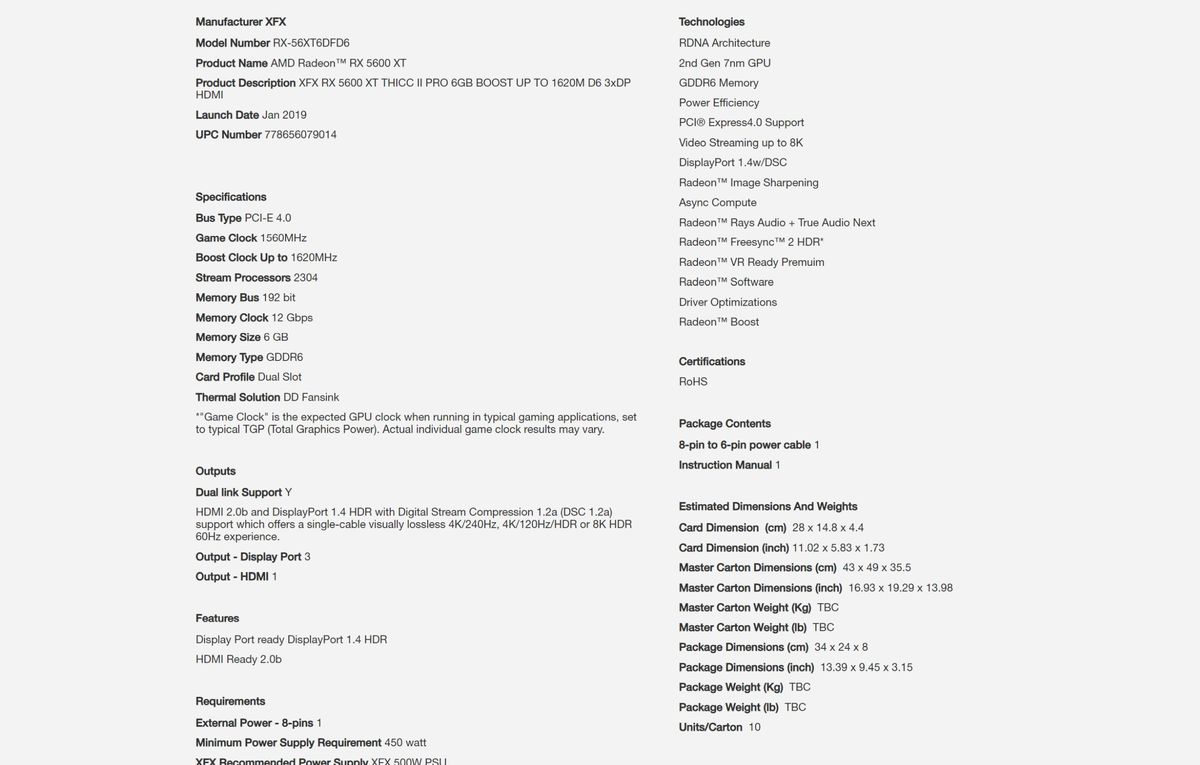 XFX
XFXThe XFX Radeon RX 5600 XT Thicc II Pro’s product specs have been updated to include the faster clock speeds introduced by the company’s “Pro-Tuned” VBIOS.
Despite being called “pro-tuned,” however, the Thicc II Pro’s new BIOS doesn’t add quite as much oomph as the upgraded VBIOS for the Sapphire Pulse RX 5600 XT does—and Sapphire’s card costs $10 less. XFX’s pro-tuned BIOS bumps the boost clock up to 1,620MHz, and the game clock up to 1,560MHz (or AMD’s reference boost clock). It also leaves memory clock speeds untouched, at 12Gbps. By contrast, Sapphire’s new BIOS for the Pulse bumps the boost clock speeds to 1,750MHz and memory clock speeds to 14Gbps. Between the two, Sapphire’s card can be roughly 10 percent faster in some games (but not all), as you’ll see in our benchmarks.
So why wouldn’t XFX bump speeds up to match the Pulse, given that Sapphire’s card was widely sampled by AMD for product reviews? Product lines are complicated. Remember that graphics card makers designed their lineups before AMD released its BIOS restrictions. The Thicc II Pro is just one of many cards in XFX’s Radeon RX 5600 XT series—it also offers Raw II Pro, Thicc III Pro, and Thicc III Ultra models. Boosting the specifications of one affects the value proposition of the others. Factory overclocks are a premium feature, especially the higher they go.
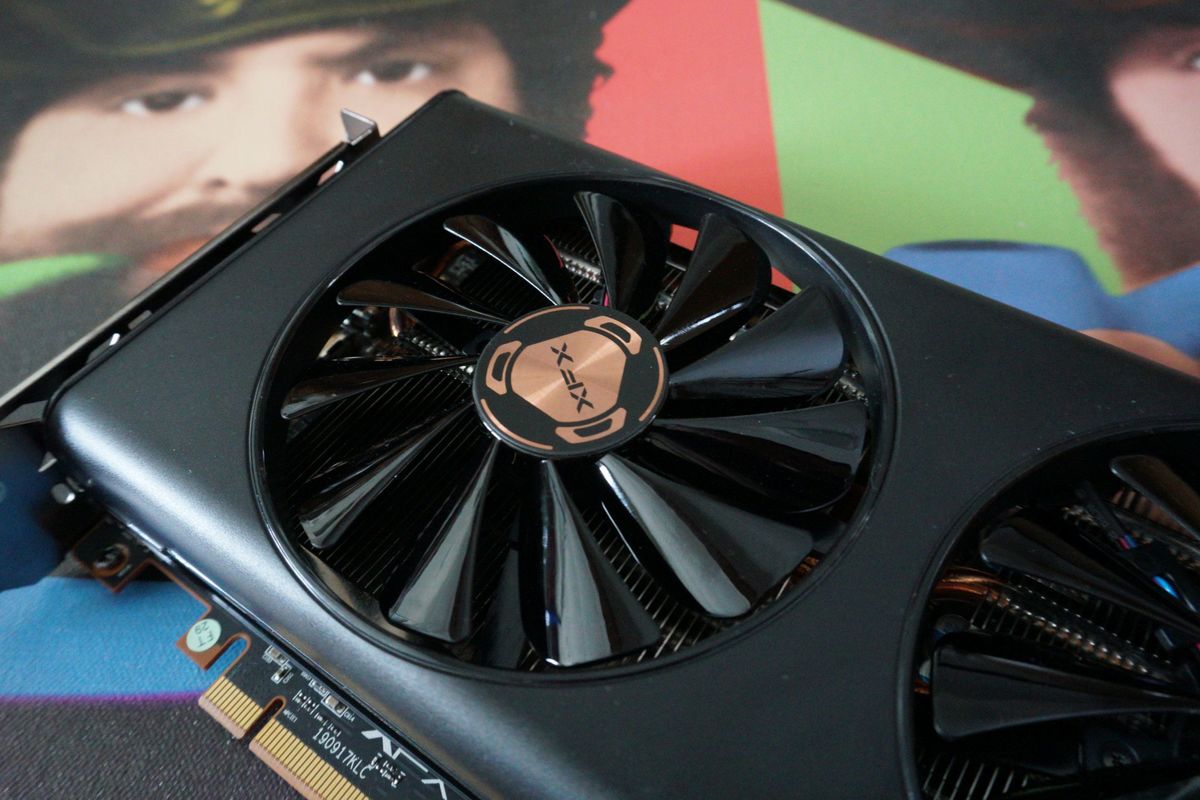 Brad Chacos/IDG
Brad Chacos/IDGNone of XFX’s pro-tuned BIOSes offer memory clock boosts, though. Again: why? In an eye-opening video stream, MSI marketing managers said that while the memory chips provided by AMD are technically 14Gbps modules, they were tested and validated only for 12Gbps. Pushing speeds higher because AMD authorized a higher power limit for these boards could affect stability, and don’t forget that AMD’s partners designed their cooling systems around the reference specifications at the 12Gbps validated memory speeds. Just because Sapphire was willing to push the pedal to the metal doesn’t mean all GPU makers can swallow the potential risk, and the potential support headaches from graphics cards suffering from instability in the hands of buyers.
Bottom line: AMD’s decision to push the eleventh-hour BIOS tossed a big monkey wrench into its partners’ Radeon RX 5600 XT lineups.
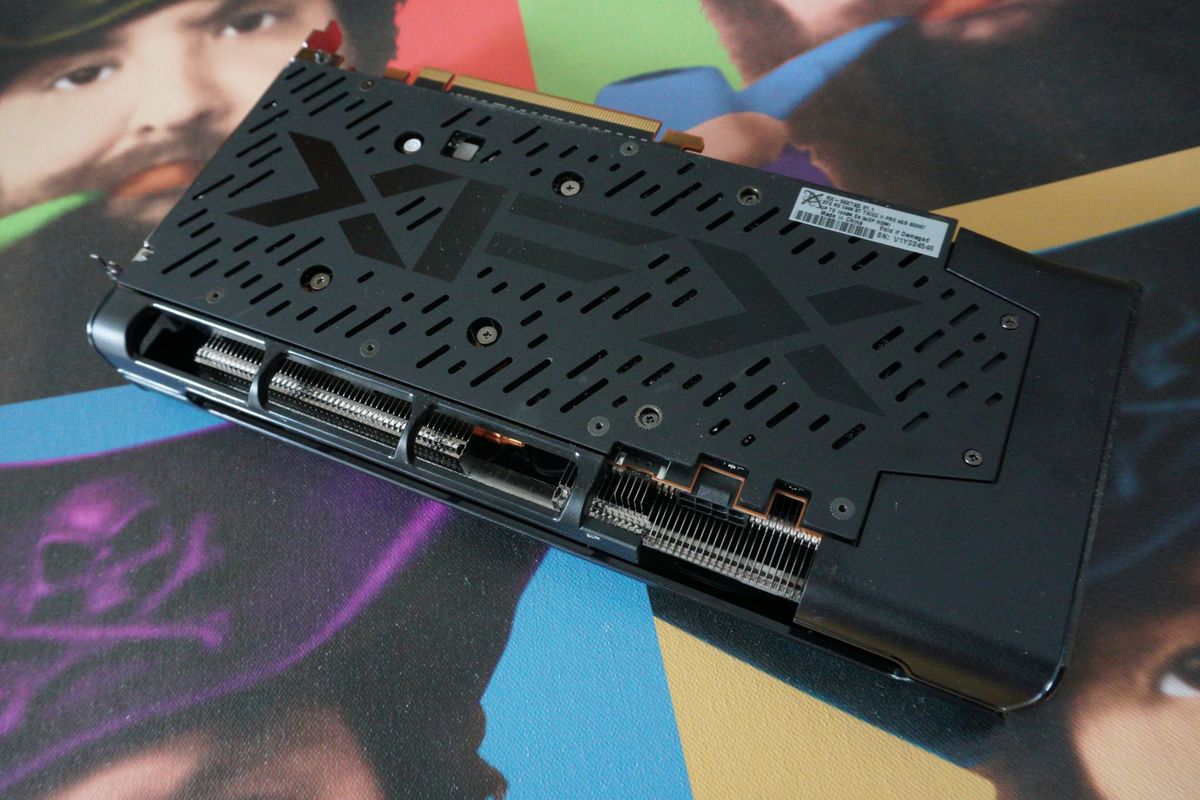 Brad Chacos/IDG
Brad Chacos/IDGIt’s a shame, because the Thicc II Pro features a nice custom design that’s well worth the extra $20 over the Radeon RX 5600 XT’s $280 MSRP. This new model continues the sleek matte black aesthetic introduced in the Radeon RX 5700 XT Thicc II Ultra, but refined by feedback that XFX received over the pricier card’s thermal design.
XFX’s new Thicc II Pro is noticeably slimmer and shorter than its bigger sibling. A smaller heat sink inside and a lack of chrome accents unfortunately removes some of the muscle-car feel of the original. Yes, it’s less “thicc.” It’s still fetching, though—one of my favorite looks in recent years.
 Brad Chacos/IDG
Brad Chacos/IDG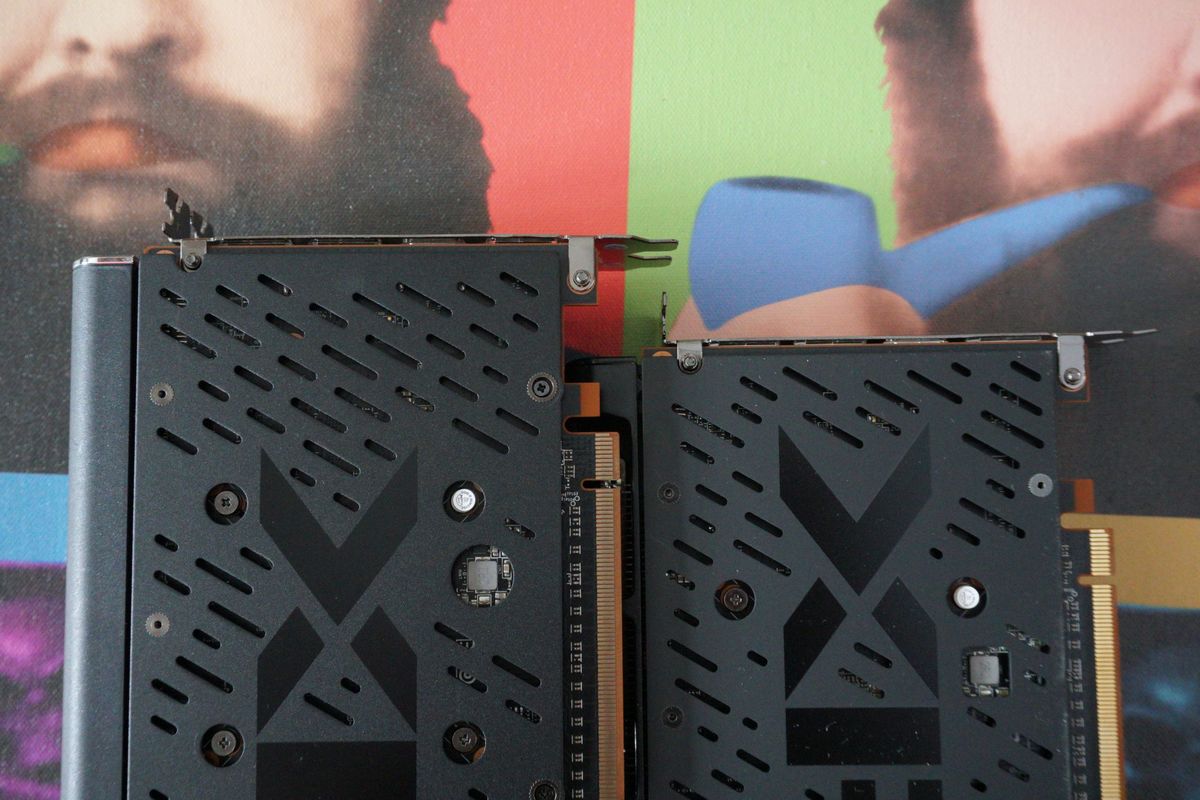 Brad Chacos/IDG
Brad Chacos/IDGThe Radeon RX 5700 XT version of the Thicc II Ultra (left) is both longer and thicker than the Radeon RX 5600 XT Thicc II Pro (right), but the Thicc II Pro adds in some extra cooling improvements.
XFX’s new card works in the copper cooling plate introduced in the follow-up Radeon RX 5700 XT Thicc III Ultra to help lower memory temperatures, along with copper heatpipes, and puts additional cooling vents on the edge of the shroud. These components also reduce the hot-rod feel of the design, but in any muscle car, performance is paramount.
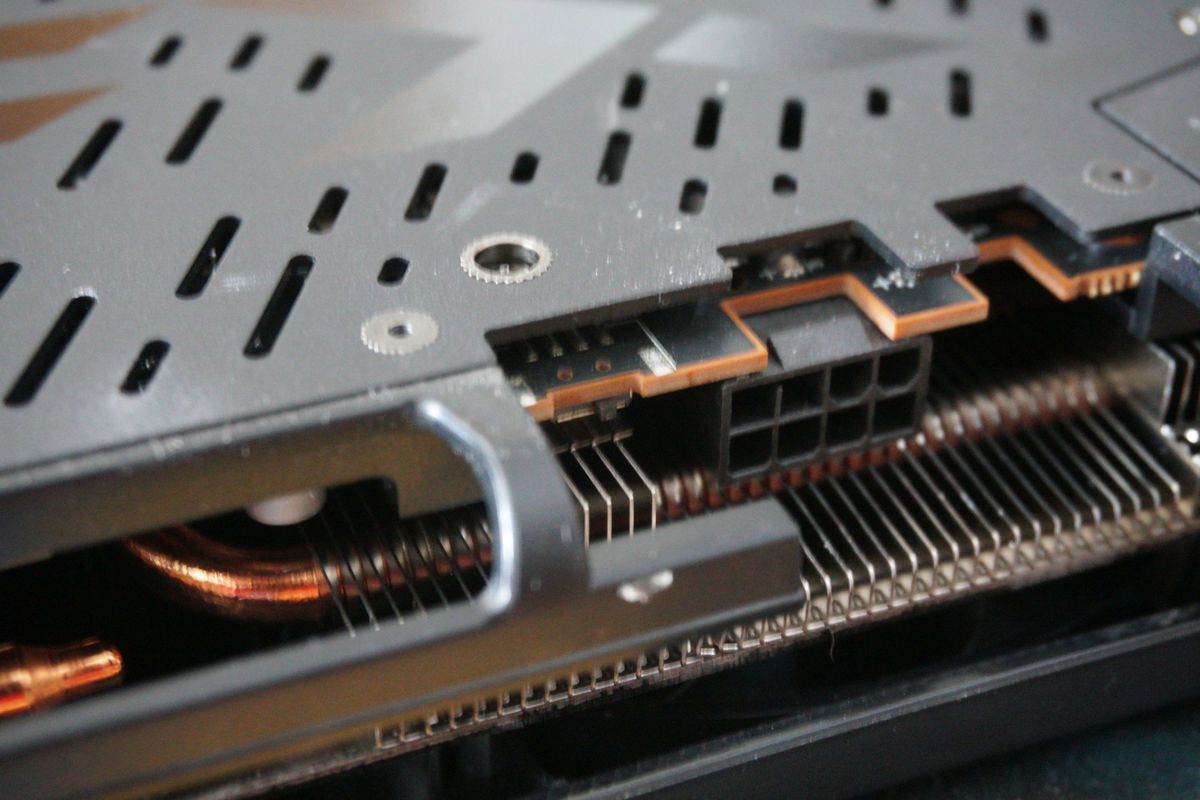 Brad Chacos/IDG
Brad Chacos/IDGThe tiny, easy-to-miss BIOS switch is located to the left of the Thicc II Pro’s 8-pin power connector.
The card’s topped by a fetching metal backplate emblazoned with XFX’s logo, though the shroud itself is plastic. Two large axial fans push hot air out of the card and into your system. Better yet, they remain idle (and thus utterly silent) until you load up the GPU with a game or other visually intensive workload. A dual-BIOS switch, for different high-performance and lower-acoustic profiles, serves as the cherry topping off this solid design.
The XFX Radeon RX 5600 XT Thicc II Pro connects to your power supply via a single 8-pin connector, while you’ll find a single HDMI connection and three DisplayPorts for outputs. Speaking of which: Let’s get to the games.
Next page: Our test system, benchmarks begin

